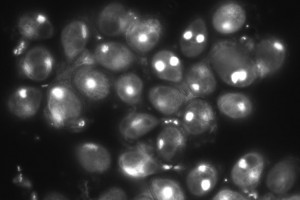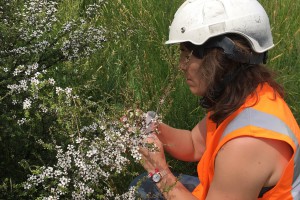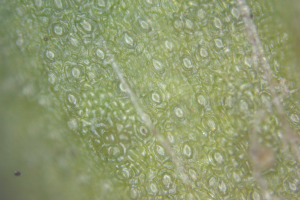Novel mitigation techniques
The most successful and socially acceptable ways to protect our trees from myrtle rust will use natural ecosystem properties. Management will also be aided by an understanding of molecular interactions between the pathogen and its host. This research area has multiple work streams:
Host-pathogen interactions
focuses on mānuka. This species is important in Aotearoa’s ecosystems – often being the first to establish in a newly developing forest and frequently used in restoration projects. It also forms the basis of New Zealand’s multi-million-dollar mānuka honey industry.
With strong interest in this tree, we are using it as a model host for the study of the natural genetic resistance our native flora might have to Austropuccinia psidii. Our team is using genetic techniques to understand the interaction between plant and pathogen during early infection. We are also researching which mānuka gene lines are more resistant to myrtle rust, and investigating the mechanisms behind this resistance.
Native biocontrol agents
hunts for microorganisms living in partnership with plants that could help hosts survive the spread of myrtle rust. We isolate (grow) fungi and bacteria from the leaves and roots of native myrtles; we also investigate plant-derived chemical extracts from leaves. We are using greenhouse experiments to identify promising candidates, with the long-term goal being to understand how plant defences are enhanced. Ultimately, we aim to develop a microbial product that could be applied to plants to give them a boost to fight myrtle rust
This work links strongly to Kaitiakitanga & Māori-led solutions.
Fungal forces
examines how A.psidii pushes its way into living leaves; with the goal being to examine whether biocontrol agents can reduce fungal growth or penetrative force. If the fungus cannot enter the plant, it cannot cause disease. First, we are seeking to develop techniques to grow A.psidii , an obligate pathogen that always grows on a live plant in nature, on an artificial medium. This will enable the growth of the fungus, as well as its interactions with biocontrol agents, to be examined at fine scales in a highly controlled laboratory environment.




